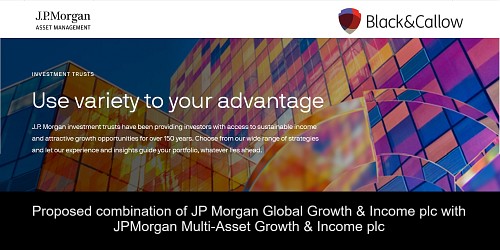27/11/2018
7th Annual Company Secretary Forum – Westminster, 27 November 2018
We were delighted to have attended the latest Company Secretary Forum in Westminster, and to have appeared on the panel discussing ‘The future of corporate reporting and front half assurance’.
Given the increasing expectation around more forward-looking statements and commentary in the front half of the annual report and the increasing scrutiny on alternative performance measures, other non-financial KPIs, risk reporting, CSR disclosures and climate related financial risks, there is a growing need to have clear and robust assurance on the development of that data.
The panel comprised:
- Tim Black – Managing Director, Black&Callow (and BlackCallowEnergy, our Reporting venture)
- Stephen Craig – Partner, Deloitte
- Rob Booth – General Counsel & Company Secretary, The Crown Estate
Polling highlights:
- 95% of attendees admitted that they struggle with how best to convey material information in the most concise and engaging way in their Annual Report
- Only 2 attendees have got to grips with XBRL, which comes into force for Listed Companies from 2020
- Few if any attendees admitted to adopting the Reporting Lab’s “framework and set of questions” as the basis of performance metrics
Key discussion notes:
Sourcing robust and qualitative information/data
Challenge for the Company Secretary when interviewing management for the Strategic Report is interpreting the meanings which the Board has given to the subjects under discussion, to provide context. Case Studies and Q&A sessions, which give context particularly to questions of Governance and areas such as Culture or Stakeholder Engagement were generally regarded as good ways to provide this context. A key element is having a well thought out plan of what you want to produce and who is responsible for producing this. Co Secs need to recognise that they have a role in ensuring a properly independent viewpoint, to help present better information which forms an important part of describing wider performance and outlook.
The FRC’s Financial Reporting Lab report on performance metrics
The FRC’s Financial Reporting Lab June 2018 Report – states “investors have strong views about how companies should report their performance... this issue is central to questions about how companies demonstrate the value they create and how investors value companies”. Given that Reporting guidance and ‘Best Practice’ are well established and there’s no shortage of information, to what lengths should companies go to make even more info available? They key issue here is relevance. Often so much data is provided it can be hard to understand the underlying messages, and companies should challenge what metrics are used by stakeholders.
Should investors be spoon-fed? It was generally agreed that there is a balance between seeking core or standardised metrics and dis-incentivising companies from seeking to innovate their reporting models. There has recently been a growth of insight into metrics that underpin long term resilience of the business model and strategy. A collaborative approach between Co Secs which includes involvement in initiatives such as A4S helps test that balance and push more science into the broader metrics.
How do we see it moving into the future
Given everything that Listed companies now need to comply with, from the Code to the Companies Act via ESMA and IIRC, how can these be reconciled into a sensible approach? It was generally agreed that there’s no silver bullet shortcut to answer this. Reports are becoming increasingly complex, alongside the move to more internationally accepted approaches and in different, evolving business environments.
Method is key: a diverse approach helps; an iterative matrix of requirements with some objective external input; and if possible, professional project management assistance – either internally or externally resourced. Integrating the necessary governance and measurement methodology into decision making is a key aspect of future simplicity too.
In general, it’s unlikely that in future there would be separate Reports over and above what exists now; the move to XBRL should also be integrated into the existing Report.
Sign posting and joining up the front end and back end of the accounts
Signposting and coding can help bring an integrated Report to life. That includes both signposting on the key themes & narrative across the whole Report, and signposting to online and interactive content in other source areas – such as hosted content. Too many signposts however are as bad as none: Co Secs need to keep signposting lean and align it to a well thought through, tight set of key themes. As an example, the role of the Board on a ‘Board in Action’ spread in the Report can also help join up Governance and Strategic Reports. Equally, seeing within the Remuneration Report the same KPIs as in the Strategic Report also brings all the elements together.
Ensuring the Board is meeting their responsibilities and signing off on robust and transparent data
This is a critical area in a changing world of regulation. There can be an expectation gap: for instance, does the Board know what Audit is doing on key metrics? Are the AC aware as to where their assurance comes from: management review, controls and process, IA, EA or a third-party resource? Careful planning and greater awareness are critical.
Panel takeaways:
Black&Callow:
- Graphical treatments of areas such as the Business Model, risk appetite heat maps are easier and faster to digest than textual descriptions.
- If you’re struggling with talking about your culture, just look at your values: these should be on the first page of your Report and they all inform your culture.
- You don’t need an overblown online Reporting approach: a simple page with key highlights, perhaps a key project and some PDF downloads, is a better approach.
Deloitte:
- Upfront planning and an aligned & clear understanding from the Board and management team as to what they wish to achieve and the key messages supporting that.
- There is increasing regulatory scrutiny on annual reports – so be clear of the requirements and draw on the experience of your advisors, especially around early adoption of the new requirements.
- Be clear on what assurance you get on key performance metrics and ensure it’s sufficient given the reliance on these by stakeholders.
The Crown Estate:
1. Be really clear on your purpose of the report (which is not just compliance). That makes all of your marginal decision on approach easier.
2. Do signpost and code your content – but remember that too many signposts are a bad thing and the Report shouldn’t be the enigma code.
3. Embrace diverse views on approach. None of us is as smart as all of us.
Other recent news

15/04/2024
Join us at the LSE's Annual Investment Funds Conference on 19th …

10/04/2024
REIT, not petite: creating a £6.3bn real estate heavyweight on t…

09/04/2024
Purpose, Strategy and Business Model: how to articulate them to …

27/03/2024
